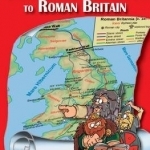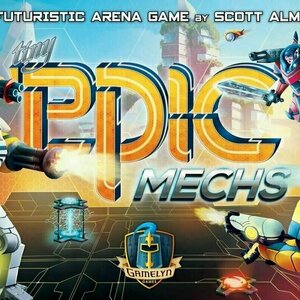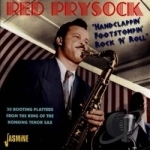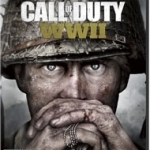Search
Search results
NS
Never Stop Designing Spaces: An Emotional Journey Through Ten Places of Italian Life
Book
In this lavishly illustrated book, the reader is taken on an inspiring tour to some of Italy s most...
Purple Phoenix Games (2266 KP) rated Tiny Epic Mechs in Tabletop Games
Jun 30, 2021
I am someone who loves strategy. It is fun for me to create elaborate plans and see them through to either success or failure. Ok, it’s fun to see them succeed, not so much fail. BUT either way – I like to have a plan. So when Tiny Epic Mechs launched on Kickstarter, I was a little wary. Action programming? Can’t that effectively negate any strategy you have set up? I was on the fence. But I backed it anyway. So was my investment a good one, or did my programmed action of picking up this game backfire and leave me KO’d?
Disclaimer: I do not intend to rehash the entire rulebook in this review, but give a general overview of turns and gameplay. For a more in-depth look at the rules, pick up a copy of the game from the publisher or your FLGS! -L
Tiny Epic Mechs is a game of action programming in which players take on the roles of Mech pilots competing in an arena-style battle royale event. Through the purchase of new weapons, powering up into Mech suits, combat with opponents (either face-to-face, or through the deployment of mines and turrets), and controlling different zones of the arena, players are trying to earn the most Victory Points by the end of 6 rounds of play. To begin, follow the setup instructions for the arena, based on the player count. Each player receives a player card (to track resources, and also acts as a reference card), a Pilot card, components in their chosen player color, and 1 Basic Weapon card to equip on their Pilot. Set the Round Tracker to round 1, create a market row of Advanced Weapons, place the Mighty Mech suit on it’s corresponding zone card, and the game is ready to begin!
Each round consists of 3 phases: Program, Execution, and Scoring. During the Program phase, players will secretly choose 4 Program Cards from their hand to represent their 4 moves/actions for this round. The chosen Program Cards will be laid out in order above the player card, and will immediately be covered by a face-down unused Program Card. (There are 8 Program Cards total, only 4 of which are used each round). It is important to note that the orientation of the Program Cards matters – Program Cards must be played parallel to the zone cards of the arena. Since they dictate the directions in which you move, you must place them exactly as you want to move. During the second phase, Execution, players will take turns revealing their Program Cards, one at a time and in order, and resolving the actions. To Execute a Program Card, you will first move your Pilot in the direction of the card’s arrow, and then resolve the action listed on the card. Movement is a must and cannot be skipped.
After Movement, you may perform the action on your card – Collect Resources, Purchase a Weapon, Deploy a Mine or a Turret, or Power Up. The first three of these are pretty self-explanatory. The Power Up action allows your Pilot to either heal themselves or upgrade into a Mech suit. Now to discuss crux of the game – combat. During the Execution phase, if you enter into the same zone as another player, you must immediately begin Combat. You will use your equipped weapons to battle your opponent, in hopes of knocking them out or forcing them to retreat. Weapons will deal base damage, or Power Attack damage, based on the circumstances of the combat. To attack with a weapon, you will deal the base damage immediately to your opponent. After your attack, the weapon you used is Exhausted and cannot be used again this combat. Your opponent then has the chance to attack back – either regularly or via Power Attack (I’ll leave that for you to discover on your own). Combat continues, alternating between players, until either a player is KO’d, or is forced to retreat because all of their weapons have been Exhausted. Initiating combat, dealing damage, and defeating your opponent all earn you VP, so combat is a vital part of the game!
After all players have revealed and performed their final Program Card, the round ends. At the end of the 2nd, 4th, and 6th round, players will perform a Scoring phase, earning points for any zones occupied by their own mines, turrets, or Pilot. At the end of the 6th and final round, scoring takes place as stated above, but players will also earn VP for all weapons they have purchased throughout the game. The player with the highest VP is the winner!
I have to admit that I am not a person who generally enjoys the mechanic of action programming. I like to really think through my strategy, and execute it exactly as I want. Action programming makes strategizing more difficult because your success or failure depends on the actions selected in advance by your opponents. You can’t really adapt mid-round, you kind of just have to deal with what’s happening. That being said, Tiny Epic Mechs, in my opinion, has a good balance of combat and actions/resource management. Your entire strategy can’t be based on combat – you need to upgrade weapons, climb into your Mech suit, etc. – and the ability to vary combat with individual upgrades makes the gameplay feel more strategic. Yes, your opponents might still mess up some of your best-laid plans, but you have to be prepared for any situation.
The overall gameplay can feel calculated or chaotic simply based on the player count. In a 2-player game, obviously there are only 2 people, and you have more opportunities to really focus on your individual Pilot before necessarily traipsing into combat. In a game with 3 or 4 players, interactions between players are inevitable and can really make the action programming mechanic stand out/feel more random/etc. Especially with a small play arena, Pilots will be crossing paths at probably every turn, and you may be forced into more combats that you anticipated. With only 2 players, there are interactions between players, but it feels a little more calm overall, and you can really work with a strategy instead of having to adapt to sudden changes in the arena.
Let’s touch on components for a minute. As always, this Tiny Epic delivers on quality components. The cards are colorful and sturdy, the text easy to read. The wooden components for tracking health/resources are good, but maybe just a little too small, even for my regularly-sized hands. The ITEMeeples, Mech suits, and weapons are always fun to play with, and sturdy enough to hold up to lots of plays. All in all, great work from Gamelyn Games once again.
For being a game of action programming, I have to admit that I enjoyed Tiny Epic Mechs more than I thought I would. At least at a 2-player count. Anything more feels too chaotic and random to me. The elements of programming and combat are engaging and elevate the gameplay, but it’s just not my favorite mechanic. Will I keep this game? Definitely. For what it is, I think it does a good job. Will I get more action programming games in the future? Probably not. I’d say Tiny Epic Mechs fills that spot for me, and that is all good in my book. Check this one out if you’re looking for something fun and relatively simple that utilizes this mechanic. Purple Phoenix Games gives it a mechanical 7 / 12.
Disclaimer: I do not intend to rehash the entire rulebook in this review, but give a general overview of turns and gameplay. For a more in-depth look at the rules, pick up a copy of the game from the publisher or your FLGS! -L
Tiny Epic Mechs is a game of action programming in which players take on the roles of Mech pilots competing in an arena-style battle royale event. Through the purchase of new weapons, powering up into Mech suits, combat with opponents (either face-to-face, or through the deployment of mines and turrets), and controlling different zones of the arena, players are trying to earn the most Victory Points by the end of 6 rounds of play. To begin, follow the setup instructions for the arena, based on the player count. Each player receives a player card (to track resources, and also acts as a reference card), a Pilot card, components in their chosen player color, and 1 Basic Weapon card to equip on their Pilot. Set the Round Tracker to round 1, create a market row of Advanced Weapons, place the Mighty Mech suit on it’s corresponding zone card, and the game is ready to begin!
Each round consists of 3 phases: Program, Execution, and Scoring. During the Program phase, players will secretly choose 4 Program Cards from their hand to represent their 4 moves/actions for this round. The chosen Program Cards will be laid out in order above the player card, and will immediately be covered by a face-down unused Program Card. (There are 8 Program Cards total, only 4 of which are used each round). It is important to note that the orientation of the Program Cards matters – Program Cards must be played parallel to the zone cards of the arena. Since they dictate the directions in which you move, you must place them exactly as you want to move. During the second phase, Execution, players will take turns revealing their Program Cards, one at a time and in order, and resolving the actions. To Execute a Program Card, you will first move your Pilot in the direction of the card’s arrow, and then resolve the action listed on the card. Movement is a must and cannot be skipped.
After Movement, you may perform the action on your card – Collect Resources, Purchase a Weapon, Deploy a Mine or a Turret, or Power Up. The first three of these are pretty self-explanatory. The Power Up action allows your Pilot to either heal themselves or upgrade into a Mech suit. Now to discuss crux of the game – combat. During the Execution phase, if you enter into the same zone as another player, you must immediately begin Combat. You will use your equipped weapons to battle your opponent, in hopes of knocking them out or forcing them to retreat. Weapons will deal base damage, or Power Attack damage, based on the circumstances of the combat. To attack with a weapon, you will deal the base damage immediately to your opponent. After your attack, the weapon you used is Exhausted and cannot be used again this combat. Your opponent then has the chance to attack back – either regularly or via Power Attack (I’ll leave that for you to discover on your own). Combat continues, alternating between players, until either a player is KO’d, or is forced to retreat because all of their weapons have been Exhausted. Initiating combat, dealing damage, and defeating your opponent all earn you VP, so combat is a vital part of the game!
After all players have revealed and performed their final Program Card, the round ends. At the end of the 2nd, 4th, and 6th round, players will perform a Scoring phase, earning points for any zones occupied by their own mines, turrets, or Pilot. At the end of the 6th and final round, scoring takes place as stated above, but players will also earn VP for all weapons they have purchased throughout the game. The player with the highest VP is the winner!
I have to admit that I am not a person who generally enjoys the mechanic of action programming. I like to really think through my strategy, and execute it exactly as I want. Action programming makes strategizing more difficult because your success or failure depends on the actions selected in advance by your opponents. You can’t really adapt mid-round, you kind of just have to deal with what’s happening. That being said, Tiny Epic Mechs, in my opinion, has a good balance of combat and actions/resource management. Your entire strategy can’t be based on combat – you need to upgrade weapons, climb into your Mech suit, etc. – and the ability to vary combat with individual upgrades makes the gameplay feel more strategic. Yes, your opponents might still mess up some of your best-laid plans, but you have to be prepared for any situation.
The overall gameplay can feel calculated or chaotic simply based on the player count. In a 2-player game, obviously there are only 2 people, and you have more opportunities to really focus on your individual Pilot before necessarily traipsing into combat. In a game with 3 or 4 players, interactions between players are inevitable and can really make the action programming mechanic stand out/feel more random/etc. Especially with a small play arena, Pilots will be crossing paths at probably every turn, and you may be forced into more combats that you anticipated. With only 2 players, there are interactions between players, but it feels a little more calm overall, and you can really work with a strategy instead of having to adapt to sudden changes in the arena.
Let’s touch on components for a minute. As always, this Tiny Epic delivers on quality components. The cards are colorful and sturdy, the text easy to read. The wooden components for tracking health/resources are good, but maybe just a little too small, even for my regularly-sized hands. The ITEMeeples, Mech suits, and weapons are always fun to play with, and sturdy enough to hold up to lots of plays. All in all, great work from Gamelyn Games once again.
For being a game of action programming, I have to admit that I enjoyed Tiny Epic Mechs more than I thought I would. At least at a 2-player count. Anything more feels too chaotic and random to me. The elements of programming and combat are engaging and elevate the gameplay, but it’s just not my favorite mechanic. Will I keep this game? Definitely. For what it is, I think it does a good job. Will I get more action programming games in the future? Probably not. I’d say Tiny Epic Mechs fills that spot for me, and that is all good in my book. Check this one out if you’re looking for something fun and relatively simple that utilizes this mechanic. Purple Phoenix Games gives it a mechanical 7 / 12.

Animal Math Games for Kids in Pre-K, Kindergarten and 1st Grade Learning Numbers, Counting, Addition and Subtraction Premium
Education and Games
App
Travel the world over from Bessie's Farm to the plains of Africa to the deepest reaches of outer...

How to Make Outdoor & Garden Furniture: Instructions for Tables, Chairs, Planters, Trellises & More
Book
Enjoy outdoor living to the fullest with these functional and decorative furniture projects for...

Creative Concrete Ornaments for the Garden: Making Pots, Planters, Birdbaths, Sculpture & More
Book
Sherri Warner Hunter, author of the bestselling "Creating with Concrete", proves once again that...
Gareth von Kallenbach (980 KP) rated the PC version of Call of Duty WWII in Video Games
Jun 19, 2019
The long running and very popular Call of Duty series has gone back to where it all began for the latest entry into the series. Call of Duty: WW2 returns the series to where the early games in the series were set and looks to restore its legacy as the best-selling series on the planet in doing so.
Last year’s Call of Duty: Infinite Warfare did not sell as well as other in the series had in recent years, and many fans were upset or divided over a futuristic setting that involved spaceships, energy weapons, and futuristic locations and technology.
It should be noted that the series has three developers working on games so developer Sledgehammer likely started work on the game before Call of Duty: Black Ops 3, and Call of Duty: Infinite Warfare shipped so the return to WW2 was something long in the planning.
The game opens with D-Day and players play as a young Private who is thrown headfirst into the conflict and learns the horrors of war as well as duty, honor, and sacrifice through his missions and interactions with members of his platoon.
Over the course of the missions, players will battle in highly-detailed maps and locales ranging from forests, bunkers, beaches, and bombed out cities as the Allies advance deeper and deeper into enemy held locales. The various locales for the game are so highly-detailed that they seem right out of a movie and would be a dream come true for location scouts looking for filming locations.
As anyone who has played a call of Duty game knows, they will be faced with waves of enemies to fight off as well as the usual stealth and vehicle missions. This time out there are a couple of driving missions as well as a clever one in a tank and one airborne fighter escort.
The attention to detail is very good as enemy Panzer tanks can take any fire from your tank head on, but have weaker armor in the bank which leads players to have to flank the enemy to survive.
Another new wrinkle is the health system which does not regenerate in the story mode and instead requires players to take cover and use a first aid kit in order to heal. The multiplayer portion does use a regenerative system so players can avoid any major disruptions in battle.
I really liked Josh Duhamel as the rough Sargent with a backstory. He was a very interesting character that kept me guessing as to his motivations and next moves as the story advanced.
Players could also call in ammo, mortar strikes, and health by requesting them from select members of their platoon. This could be tricky as when pinned down, having to move to another character to get needed items added to the challenge.
The weaponry was appropriate for the time and I had to adjust to slower load times, accuracy issues, and such with older tech, but it did give me a much greater level of immersion.
While I did enjoy the solo campaign, it did at times seem very familiar and as if I had seen and played some of it all before. I guess that is the trick with a series that has run as long as Call of Duty has as certain aspects of the gameplay are expected and while locations, weapons, locations, and characters may change, some things are going to be constant throughout the series.
The multiplayer aspects of the game really shine as not only are there numerous multiplayer modes, players can now pick a class such as Airborne, Recon, etc. which each have their own weapons and abilities and allow players to pick a division that best matches their abilities and gameplay style.
This comes in very handy in the new War mode where teams much battle one another to accomplish various objectives. Such as escorting tanks, protecting or stealing gas, and taking or defending key locales. My only issue is that this mode and many maps are camp fests where people with scoped rifles can easily hide in the back part of a map and pick off players as they spawn or enter the map. It seems far more pronounced in this game and leads to some frustrations. There is also the matter of iffy hit detection where players take half a clip from a machine gun point blank and yet can absorb them and one shit kill a player all while you unload on them.
There is also a very good Zombie mode where players take on wave after wave of undead soldiers as they attempt to get power restored and activate technology. The speed of the game is intense, the enemies numerous, and the ability to arm, armor up, and accessories your character is key as is having a good team around you.
As one person said that is Call of Duty and you know what you are in for if you have played any of the prior games. As such Call of Duty: World War 2 is not a radical new direction for the series, but rather a return to what made the series and is like slipping into a comfy pair of slippers after a long day., Familiar and comfortable and is in my opinion what the series needed.
http://sknr.net/2017/11/06/call-duty-ww2/
Last year’s Call of Duty: Infinite Warfare did not sell as well as other in the series had in recent years, and many fans were upset or divided over a futuristic setting that involved spaceships, energy weapons, and futuristic locations and technology.
It should be noted that the series has three developers working on games so developer Sledgehammer likely started work on the game before Call of Duty: Black Ops 3, and Call of Duty: Infinite Warfare shipped so the return to WW2 was something long in the planning.
The game opens with D-Day and players play as a young Private who is thrown headfirst into the conflict and learns the horrors of war as well as duty, honor, and sacrifice through his missions and interactions with members of his platoon.
Over the course of the missions, players will battle in highly-detailed maps and locales ranging from forests, bunkers, beaches, and bombed out cities as the Allies advance deeper and deeper into enemy held locales. The various locales for the game are so highly-detailed that they seem right out of a movie and would be a dream come true for location scouts looking for filming locations.
As anyone who has played a call of Duty game knows, they will be faced with waves of enemies to fight off as well as the usual stealth and vehicle missions. This time out there are a couple of driving missions as well as a clever one in a tank and one airborne fighter escort.
The attention to detail is very good as enemy Panzer tanks can take any fire from your tank head on, but have weaker armor in the bank which leads players to have to flank the enemy to survive.
Another new wrinkle is the health system which does not regenerate in the story mode and instead requires players to take cover and use a first aid kit in order to heal. The multiplayer portion does use a regenerative system so players can avoid any major disruptions in battle.
I really liked Josh Duhamel as the rough Sargent with a backstory. He was a very interesting character that kept me guessing as to his motivations and next moves as the story advanced.
Players could also call in ammo, mortar strikes, and health by requesting them from select members of their platoon. This could be tricky as when pinned down, having to move to another character to get needed items added to the challenge.
The weaponry was appropriate for the time and I had to adjust to slower load times, accuracy issues, and such with older tech, but it did give me a much greater level of immersion.
While I did enjoy the solo campaign, it did at times seem very familiar and as if I had seen and played some of it all before. I guess that is the trick with a series that has run as long as Call of Duty has as certain aspects of the gameplay are expected and while locations, weapons, locations, and characters may change, some things are going to be constant throughout the series.
The multiplayer aspects of the game really shine as not only are there numerous multiplayer modes, players can now pick a class such as Airborne, Recon, etc. which each have their own weapons and abilities and allow players to pick a division that best matches their abilities and gameplay style.
This comes in very handy in the new War mode where teams much battle one another to accomplish various objectives. Such as escorting tanks, protecting or stealing gas, and taking or defending key locales. My only issue is that this mode and many maps are camp fests where people with scoped rifles can easily hide in the back part of a map and pick off players as they spawn or enter the map. It seems far more pronounced in this game and leads to some frustrations. There is also the matter of iffy hit detection where players take half a clip from a machine gun point blank and yet can absorb them and one shit kill a player all while you unload on them.
There is also a very good Zombie mode where players take on wave after wave of undead soldiers as they attempt to get power restored and activate technology. The speed of the game is intense, the enemies numerous, and the ability to arm, armor up, and accessories your character is key as is having a good team around you.
As one person said that is Call of Duty and you know what you are in for if you have played any of the prior games. As such Call of Duty: World War 2 is not a radical new direction for the series, but rather a return to what made the series and is like slipping into a comfy pair of slippers after a long day., Familiar and comfortable and is in my opinion what the series needed.
http://sknr.net/2017/11/06/call-duty-ww2/
Gareth von Kallenbach (980 KP) rated the PC version of Borderlands 3 in Video Games
Sep 25, 2019
Gamers exchange the world over can rejoice as the long-awaited new chapter in the Borderlands saga has arrived with Borderlands 3. The game takes place after the events of Borderlands 2 and the Telltale series of games which cast players as one of four new Vault Hunters who seek to find one of the Great Vaults which have been the main objective of the prior games in the series.
The four new characters break down as follows…
Amara the Siren, FL4K the Tracker, Moze the Gunner and Zane the Operative.
Characters have unique abilities which can be adjusted as the game unfolds as players will gain skill points to allocate to various abilities as they level up throughout the game. Each character has a special ability that is deployable after a certain amount of time and really can turn the tide of battle. Moze for example can deploy a mechanized unit known as an “Iron Bear” which is capable of unleashing a devastating arsenal of bullets, rockets, flames, and increased protection which makes it ideal when taking on some of the bosses in the game.
One of the new features in the game aside from being able to have better ability to mantel or destroy cover objects is a greater range of destructible containers which helps turn the tide against the relentless and overwhelming numbers that players can face.
Well I played a significant chunk of the game on my own; the game does allow up to four players to play with one another and this came in very handy during a couple of battles Where I simply did not have enough firepower to complete it on my own.
There were some frustrations with the matchmaking system which did not allow me to select games to join and I was basically dropped in blind to games near my character level. This caused me to have to repeat a mission multiple times and then endure having to re-do the mission I needed help with three times due to various glitches and crashes.
Further complicating matters was that in joining a game blind, that now became the jumping off point for continuing my game. It took a little bit of searching to find one roughly where I had left off; so I could continue on.
The key for me turned out to be asking for assistance from players on my friends list as well is those who were listed on my recent contact sessions.
The game tasks players to go up against Twins who have started a Cult as they attempt to unlock the Great Vault and use the power to control the galaxy and kill all those who oppose them.
As anybody who is played any games in the series knows; there are all manner of enemies and creatures for players to battle as well as vehicles and NPC characters to help out and move the story along.
This time out players have a spaceship called Sanctuary which allows players to venture away from Pandora and experience several other planets in the Borderlands Universe. Each planet has its own unique look and bio system ranging from a Louisiana style swamp location to high-tech cities as an example.
The graphics in the game are absolutely stunning in the amount of detail is simply breathtaking to behold. The level of detail in something as simple as a mansion is worthy of just walking around having a look were it not for the numerous things trying to take you out. The game has incredible amounts of loot that players can accumulate which can be used for various upgrades. 2K and Gearbox promote that there are over 1 billion weapons available in the game which leads to some really difficult choices as to which ones players keep, discard, or placed into storage.
While one may offer a bigger punch; it may be slow to reload, have limited ammunition, and increased accuracy. There is definitely a lot of experimentation that goes on and the same is true for the skills tree which even after completing the game is still fairly open which will entice me to go back and complete side quests while I wait for the DLC and maximizes the potential of my character.
The game is exceptionally long which is not a bad thing save for a couple of times when I thought the game was wrapping up only to be signed more back-and-forth or other missions to advance the story. This is not a bad thing as the universe is incredibly immersive but I found myself eager to see what the outcome of the story was rather than what seem like a series of missions designed to extend gameplay.
That being said; Borderlands 3 was hands-down the best gaming experience I have had this year and is an early contender for game of the year award despite the glitches and matchmaking frustrations that hampered some of my enjoyment of the game.
Start to finish I was absolutely captivated by the game and I’m eager to go back in and experience more of this incredible universe as I look forward to the free and paid updates that are coming soon which will hopefully keep me satisfied until the next chapter in the series is released which hopefully will not be as long a wait.
4.5 stars out
The four new characters break down as follows…
Amara the Siren, FL4K the Tracker, Moze the Gunner and Zane the Operative.
Characters have unique abilities which can be adjusted as the game unfolds as players will gain skill points to allocate to various abilities as they level up throughout the game. Each character has a special ability that is deployable after a certain amount of time and really can turn the tide of battle. Moze for example can deploy a mechanized unit known as an “Iron Bear” which is capable of unleashing a devastating arsenal of bullets, rockets, flames, and increased protection which makes it ideal when taking on some of the bosses in the game.
One of the new features in the game aside from being able to have better ability to mantel or destroy cover objects is a greater range of destructible containers which helps turn the tide against the relentless and overwhelming numbers that players can face.
Well I played a significant chunk of the game on my own; the game does allow up to four players to play with one another and this came in very handy during a couple of battles Where I simply did not have enough firepower to complete it on my own.
There were some frustrations with the matchmaking system which did not allow me to select games to join and I was basically dropped in blind to games near my character level. This caused me to have to repeat a mission multiple times and then endure having to re-do the mission I needed help with three times due to various glitches and crashes.
Further complicating matters was that in joining a game blind, that now became the jumping off point for continuing my game. It took a little bit of searching to find one roughly where I had left off; so I could continue on.
The key for me turned out to be asking for assistance from players on my friends list as well is those who were listed on my recent contact sessions.
The game tasks players to go up against Twins who have started a Cult as they attempt to unlock the Great Vault and use the power to control the galaxy and kill all those who oppose them.
As anybody who is played any games in the series knows; there are all manner of enemies and creatures for players to battle as well as vehicles and NPC characters to help out and move the story along.
This time out players have a spaceship called Sanctuary which allows players to venture away from Pandora and experience several other planets in the Borderlands Universe. Each planet has its own unique look and bio system ranging from a Louisiana style swamp location to high-tech cities as an example.
The graphics in the game are absolutely stunning in the amount of detail is simply breathtaking to behold. The level of detail in something as simple as a mansion is worthy of just walking around having a look were it not for the numerous things trying to take you out. The game has incredible amounts of loot that players can accumulate which can be used for various upgrades. 2K and Gearbox promote that there are over 1 billion weapons available in the game which leads to some really difficult choices as to which ones players keep, discard, or placed into storage.
While one may offer a bigger punch; it may be slow to reload, have limited ammunition, and increased accuracy. There is definitely a lot of experimentation that goes on and the same is true for the skills tree which even after completing the game is still fairly open which will entice me to go back and complete side quests while I wait for the DLC and maximizes the potential of my character.
The game is exceptionally long which is not a bad thing save for a couple of times when I thought the game was wrapping up only to be signed more back-and-forth or other missions to advance the story. This is not a bad thing as the universe is incredibly immersive but I found myself eager to see what the outcome of the story was rather than what seem like a series of missions designed to extend gameplay.
That being said; Borderlands 3 was hands-down the best gaming experience I have had this year and is an early contender for game of the year award despite the glitches and matchmaking frustrations that hampered some of my enjoyment of the game.
Start to finish I was absolutely captivated by the game and I’m eager to go back in and experience more of this incredible universe as I look forward to the free and paid updates that are coming soon which will hopefully keep me satisfied until the next chapter in the series is released which hopefully will not be as long a wait.
4.5 stars out





